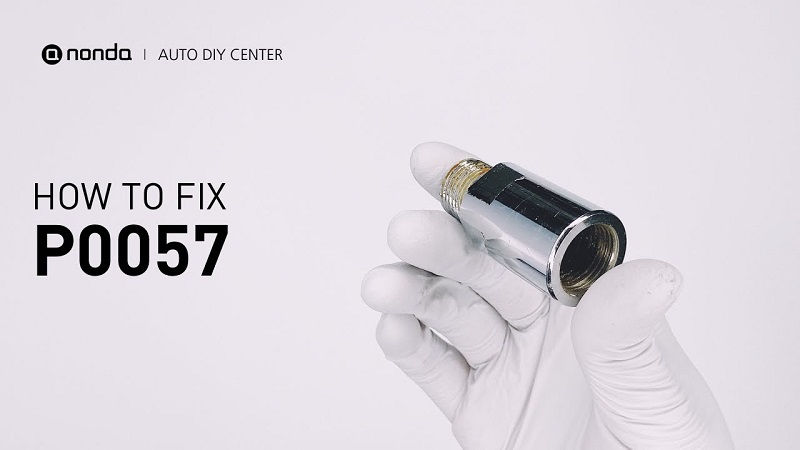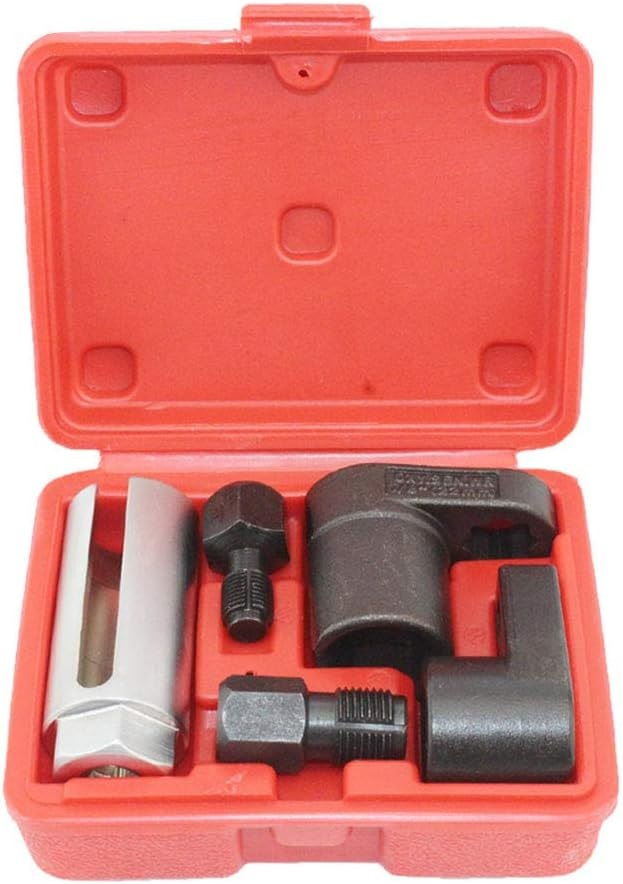This post contains affiliate links. This means I will make a commission at no extra cost to you should you click through and make a purchase [ “As an Amazon Associate, I earn from qualifying purchases.” ]. Read the full disclosure here.
Understanding P0057 Code HO2S Heater Control Circuit Low (Bank 2 Sensor 2) GuideMechanic.Com In the realm of automotive diagnostics, the complexity of modern vehicles can sometimes feel overwhelming. Among the plethora of codes that can illuminate the dreaded “Check Engine” light, P0057 is one that frequently perplexes car owners and technicians alike.
This code specifically points to an issue with the HO2S (Heated Oxygen Sensor) heater control circuit on Bank 2 Sensor 2. Let’s delve into what this code signifies, its possible causes, and how to address it effectively.
See Also: P0055 Code HO2S Heater Resistance (Bank 1, Sensor 3)
What is P0057 Code?

P0057 is a diagnostic trouble code (DTC) that indicates a problem with the heater control circuit of the downstream oxygen sensor on Bank 2 of the engine.
The term “Bank 2” refers to the side of the engine that does not contain cylinder 1 in a V6 or V8 engine. “Sensor 2” designates the downstream oxygen sensor, which is located after the catalytic converter.
Understanding the Function of the HO2S Heater
Before diving into the specifics of P0057, it’s essential to grasp the role of the HO2S in the vehicle’s operation. The oxygen sensor measures the amount of oxygen in the exhaust gases, providing crucial data for the engine control unit (ECU) to adjust the air-fuel mixture.
In modern vehicles, many oxygen sensors feature a built-in heater that brings the sensor to operating temperature more quickly, improving fuel efficiency and emissions control.
Common Causes of P0057 Code
Check out this A ABIGAIL 5 PCS Automotive O2 Oxygen Sensor Socket Offset Wrench Remover Tool and Thread Chaser Tool

Several factors can trigger a P0057 code, ranging from electrical issues to sensor malfunctions:
Faulty Oxygen Sensor:
The most common cause of P0057 is a defective oxygen sensor. Over time, these sensors can wear out or become contaminated, leading to inaccurate readings or heater malfunctions.
Heater Circuit Malfunction:
Issues with the heater circuit, such as a blown fuse, damaged wiring, or a faulty relay, can prevent the oxygen sensor heater from operating correctly.
Exhaust Leaks:
Leaks in the exhaust system can expose the oxygen sensor to excessive heat or contaminants, potentially damaging the sensor or its heating element.
Engine Misfires:
Persistent engine misfires can result in unburned fuel entering the exhaust system, causing the downstream oxygen sensor to operate outside its normal parameters.
ECU or Wiring Issues:
Problems with the engine control unit or its wiring harness can interfere with the proper operation of the oxygen sensor heater circuit, triggering a P0057 code.
Diagnosing P0057 Code

Diagnosing a P0057 code typically involves a systematic approach to pinpointing the underlying issue:
- Code Retrieval: Begin by using an OBD-II scanner to retrieve the stored trouble code and any associated freeze frame data.
- Visual Inspection: Inspect the oxygen sensor and its wiring for any signs of damage, corrosion, or contamination. Check for exhaust leaks near the sensor as well.
- Heater Circuit Testing: Use a multimeter to test the resistance of the oxygen sensor heater circuit. Compare the readings to the manufacturer’s specifications to determine if the circuit is functioning correctly.
- Sensor Functionality: Test the oxygen sensor’s response to changes in engine operating conditions using a scan tool or oscilloscope. A properly functioning sensor should exhibit smooth and predictable voltage fluctuations.
- Check for Related Codes: Look for any additional trouble codes that may provide clues to related issues, such as misfires or fuel system faults.
Addressing P0057

Once the root cause of the P0057 code has been identified, appropriate measures can be taken to address it:
Replace the Oxygen Sensor:
If the oxygen sensor is determined to be faulty, replace it with a new, high-quality unit compatible with your vehicle’s make and model.
Repair Wiring or Connectors:
Repair any damaged wiring or connectors in the oxygen sensor heater circuit. Ensure proper routing and secure connections to prevent future issues.
Check and Replace Fuses or Relays:
Inspect the fuses and relays associated with the oxygen sensor heater circuit. Replace any blown fuses or malfunctioning relays as needed.
Address Engine Performance Issues:
If engine misfires or other mechanical issues are contributing to the P0057 code, diagnose and repair these problems to prevent future sensor damage.
Clear Codes and Perform Verification:
After addressing the underlying issue, clear the trouble codes from the ECU’s memory using the OBD-II scanner. Take the vehicle for a test drive to verify that the code does not return.
Conclusion
See Also: P0056 Code HO2S Heater Control Circuit (Bank 2 Sensor 2)
In summary, P0057 is a diagnostic trouble code that indicates a problem with the HO2S heater control circuit on Bank 2 Sensor 2. Understanding the function of the oxygen sensor, common causes of the code, and the diagnostic process is crucial for effective troubleshooting and repair.
By following a systematic approach and addressing the underlying issues promptly, you can resolve P0057 and restore your vehicle’s performance and emissions compliance.
- P0000 Through P0099: Understanding OBD-II Trouble Codes - February 11, 2025
- P0000 Through P0199: Understanding OBD-II Trouble Codes - February 10, 2025
- P0080 Exhaust Valve Control Solenoid Circuit High (Bank 1) - February 9, 2025
